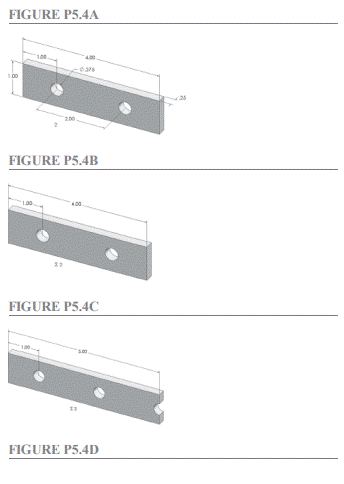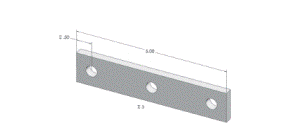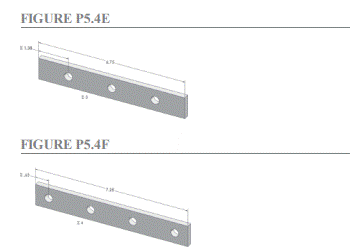In this exercise, you will model a part in which an integer design parameter (number of holes) is….
In this exercise, you will model a part in which an integer design parameter (number of holes) is controlled by an equation.
a. Model the part shown in Figure P5.4A. Use a linear pattern to place the second hole. Show all of the dimensions by right-clicking on Annotations in the FeatureManager and clicking on “Show Feature Dimensions.”
b. Add an equation so that the number of holes is equal to the length of the part (4 inches in the current configuration) divided by 2. Therefore, there will be one hole for every 2 inches of length. Show only the dimensions shown in Figure P5.4B by right-clicking on each of the other dimensions and selecting “Hide.”
c. Change the length of the part to 5 inches, as shown in Figure P5.4C. Note that the program has rounded the value of the equation (2.5) to the closest integer value (3).
d. Add a second equation to change the value of the dimension specifying the location of the first hole so that the holes will be centered on the part, as shown in Figure P5.4D.


Experiment with several values of length to show that the equations produce the desired results, as shown in Figures P5.4E and P5.4F.

In this exercise, you will model a part in which an integer design parameter (number of holes) is…